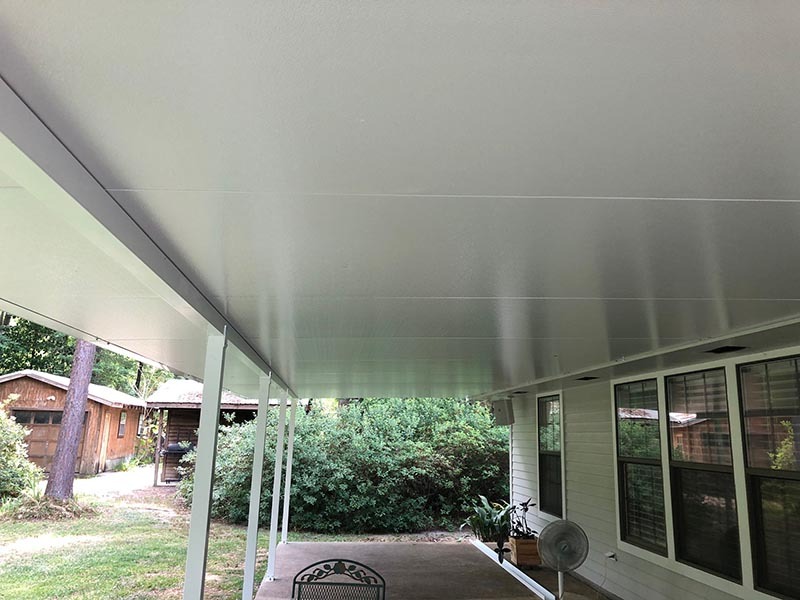
Thank you for purchasing a ScreenHouse
Insulated Patio Cover
Your purchase is designed and engineered by more than 20 years of commercial and residential design and proudly manufactured in the USA from responsibly sourced materials in the state of the art manufacturing facilities at Superior Mason and Four Seasons Building Products.
Your purchase is covered by the best warranty in the business with a limited 15 years warranty on the insulated panels and a limited lifetime warranty on all the aluminum extrusions.
DISCLAIMER**
This document is intended as a guide only. There are far too many variables within existing structures for us to address each an every one. As such, this kit is very adaptable and nearly any error is easily corrected within the existing materials received. Assembling this materials supplied kit will require patience & common sense. If you have any doubts about the action you should take we are just a call or email away for support. A reference cut sheet, 3D model and various drawings (plan view, roof view, elevation view, etc) are available in the customer portal or by request. We will not be responsible for errors in cuts made to the material.
PLEASE READ AND REVIEW COMPLETE INSTALLATION GUIDE STEP-BY-STEP
Installation Basics
The Screen House Insulated cover installation guide recommends 1-to-3 physically fit individual(s) with some experience in Do-it-Yourself (DIY) home projects and should complete installation within 8-12 hours with proper planning.
Please review this installation guide thoroughly and understand each step’s task before the start of the installation process. All recommended tools are required for a successful installation and some components will require alterations to fit your structure’s unique installation. This installation guide is intended to be reviewed along with the custom layout for the room to be installed provided with your quote.
Insulated Patio Cover Systems come with instructions, all panels, beam, rear extruded and thermally broken C channel, side extruded fascia, front extruded gutter, screws & hardware, lags for panel to beam connection, posts, sealant, drain scuppers, touch up paint, tar tape, and top post brackets and hardware. Hardware to mount the back-wall 'C' channel to your house or trailer wall to be purchased locally.
Inspect your project area for safety issues noting all electrical power lines and electrical outlets.
DO NOT begin this project until project area is safe.
Tools You Need
Recommend and required tools are not included but necessary for a successful installation of this enclosure. Each structure and location is unique, so please review along with custom quote layout and call our team for support with any questions at 1.800.922.4760.
- 1-2 friends
- 4 ft. Carpenter’s level
- Carpenters square
- Chalk line (to mark “U” channel locations)
- Cordless drill/nut driver
- Caulking gun
- Chop saw with a metal cutting blade on it (required to make accurate and precision cuts)
- Ladders
- Masonry bits for drilling into concrete; masonry fasteners (if necessary)
- Metal file (to smooth cut edges)
- Hammer, Screwdrivers, Drill, tape measure, Box knife, Gloves, Safety eyewear
Materials
Inventory all materials received in your shipment within a safe distance from the work area before you begin the installation process. Each step in this process will note components used to complete the task on each page. As these rooms are very custom, not all items below will be included with every order; however, a room specific materials list and cut sheet are available through the customer portal or on request by email.
Note: While every effort is made to keep this up to date, individual items may be replaced with equivalent new versions of the material at the discretion of the manufacturer and may not match up with items below. Please call or email our support team and we will review and provide guidance on the installation of the new material options. A "*" in the part number list below represents a designation for the color.
**Items labeled as "Special Car Wash" or "Custom Walk Cover" on the BOL you will receive with the delivery are generic catchall line items from the manufacturer. These are not items you will receive, only a label from the manufacturer for the custom bundle that follow below it**
Roof Components
| Part Number | Part Description | Dimension | Image |
|---|---|---|---|
| 054810* (3") 054825* (4") 054830* (6") | Rear Header | 3-1/4" H x 24' L (3") 4-1/4" H x 24' L (4") 6-1/4" H x 24' L (6") | 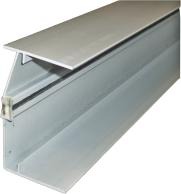 |
| 401317* (3") 401500* (4") 407085* (6") | 4' wide insulated panel w/o fan beam | 3" H x 48" W (3") 6" H x 48" W (4") 6" H x 48" W (6") |  |
| 401318* (3") 401501* (4") 407087* (6") | 4' wide insulated panel w/ fan beam | 3" H x 48" W (3") 6" H x 48" W (4") 6" H x 48" W (6") |  |
407080* (6") | 23" wide Insulated panel w/o fan beam | 3" H x 23" W (3") 6" H x 23" W (4") 6" H x 23" W (6") | 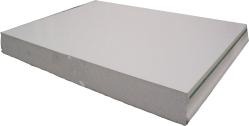 |
407081* (6") | 23" wide Insulated panel w/ fan beam | 3" H x 23" W (3") 6" H x 23" W (4") 6" H x 23" W (6") | 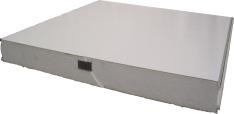 |
| 053370* (3") 054030* (4") | Standard Side Fascia, Double Catch | 4" high x 25' long (3") 5" high x 25' long (4") | 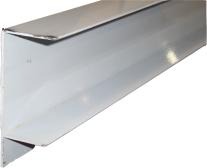 |
| 053385* (3") 053465* (4") 053470* (6") | Drip Edge Side Fascia | 4" H x 24' L (3") 5" H x 24' L (4") 7" H x 24' L (6") | 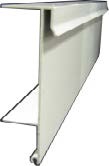 |
| 054015* (3") 054030* (4") | Front Extruded Gutter, Double Catch | 4" H x 4" W x 24' L (3") 5" H x 4" W x 24' L (4") | 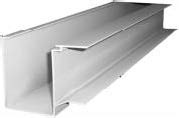 |
Beam and Posts
| Part Number | Part Description | Dimension | Image |
|---|---|---|---|
| P378* | 3" Box Beam/Post, .078" Gauge | 3" H x 3" W x Various lengths | 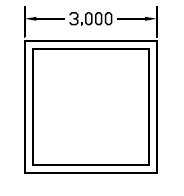 |
| P329* | 3" Box Beam/Post, .125" Gauge | 3" H x 3" W x Various lengths | 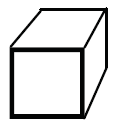 |
| P330* | 4" Box Beam/Post, .125" Gauge | 4" H x 4" W x Various lengths | 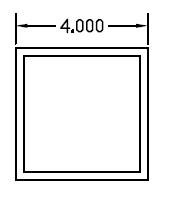 |
| P201* | 7" C-Beam | 6.75" H x 2.75" W x Various Lengths | 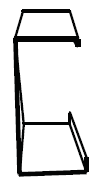 |
| P200* | 7" I-Beam | 7" H x 5.5" W x Various Lengths | 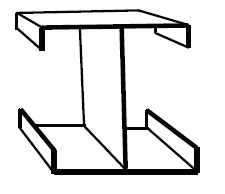 |
| P204* | 10" C-Beam | 10" H x 3" W x Various Lengths | 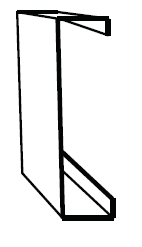 |
| 051780* 051790* 051795* 051810* 051815* 051835* | Self-Mating Beam w/ spline groove | 2" W x 4" H Self Mating Beam 2" W x 5" H Self Mating Beam 2" W x 6" H Self Mating Beam 2" W x 7" H Self Mating Beam 2" W x 8" H Self Mating Beam 2" W x 9" H Self Mating Beam |  |
Post and Beam Brackets
| Part Number | Part Description | Image |
|---|---|---|
| P357* | 3" Beam to Post Bracket | 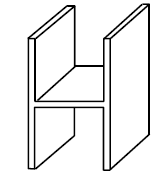 |
| P354* | 3" Bottom Post Bracket | 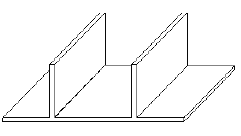 |
| P345* | 4" Top and Bottom Post Bracket |  |
| P353* | 3" post top I-beam bracket w/ hardware | |
| P350* | 3" post to C-beam bolts/nuts/washers | |
| P430* | 4" post to C-beam bolts/nuts/washers |
Small Parts and Components
| Part Number | Part Description | Dimension | Image |
|---|---|---|---|
| P405* | Painted Tek Screw | #14 x 3/4" |  |
| P431A0000 P453A0005 P455A0000 | Sealer tek with neoprene washer | 4" long (for 3" panels) 5" long (for 4" panels) 7" long (for 6" panels) |  |
| P602 | Peel and Seal Tar Tape | 50' roll | 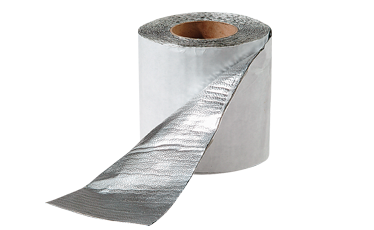 |
| P884 | Silicone Caulk | Tube |  |
| P860* | Touch Up Paint | NA |  |
| P521 | Drain Scupper | 3" x 12" |
Before You Start
If you believe you have a problem with the materials supplied for your application please call ScreenHouses Unlimited first! The manufacturer of your materials supplied kit cannot respond to customer inquiries or phone messages. We are well equipped to step in and solve any questions or issues you may have with your purchase. Insulated patio covers are quoted all panels, beams, extruded fascia for both sides, thermally broken prepitched aluminum backwall C channel, front extruded gutter, screws & hardware, lags for panel to beams connection, posts, sealant, touch up paint, tar tape, top & bottom post brackets, and hardware.
Patio Cover Basics
Our patio cover systems are designed with the handy homeowner in mind. The units are modular which enable many customizations and almost any size. Below you will see a schematic that highlights some of the key elements and terminology used in describing the covers.
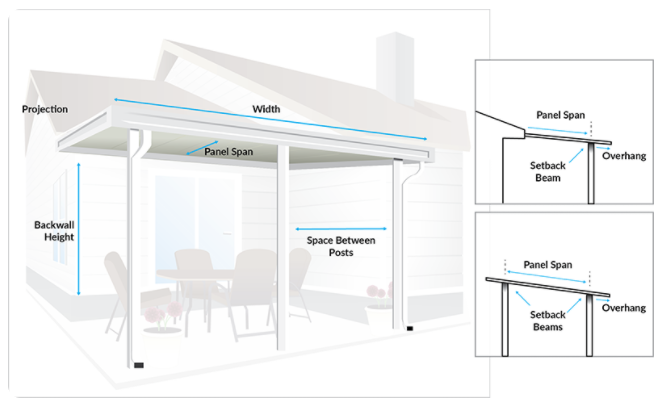
Step 1: Install Rear C Channel (wall header)
| Most insulated screen enclosures are supplied with a thermally broken c-channel which is a 24’ piece of extrusion with two legs and a black rubber thermal break in the middle of the back running the length of the extrusion. It can be installed in any orientation. The purpose of this is the reduce the thermal transfer from inside the room to the outside and reduce condensation that might occur. This may be substituted with an equivalent non-thermal pitched header in some southern regions. Follow the steps below to mount the header to your wall or fascia. | 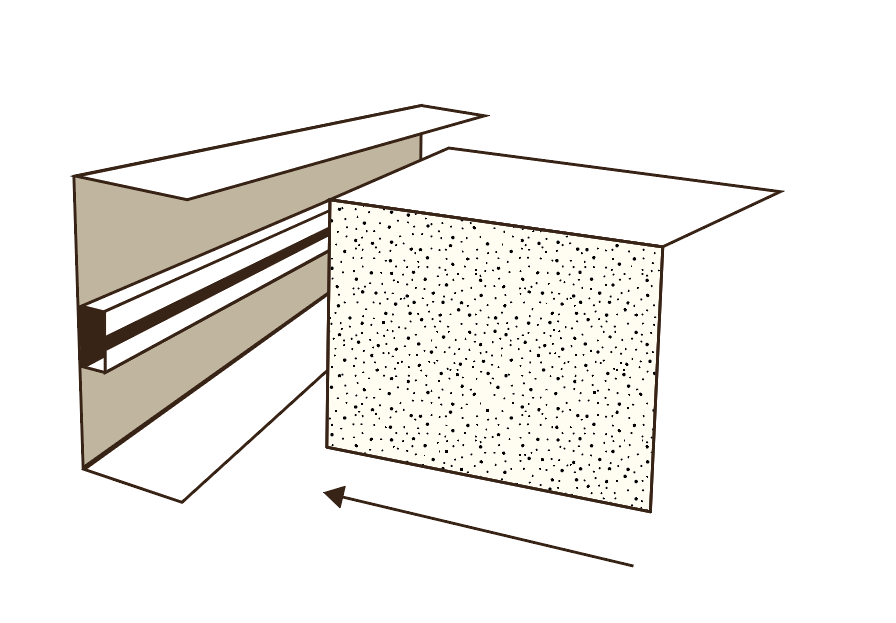 |
Step 1A: Determine C-Channel Location
Determine the area in which you are going to mount the C channel. The channel can be installed on a wall or fascia, with or without a ledger board as shown in illustrations #1 to #3 below. The construction of your house will determine which option is best to ensure you can anchor the roof to structural elements.
- If you are installing on your fascia board make sure you are catching rafter ends in order to make a secure installation.
- If you are installing on your house wall or under the small gutter of your trailer / mobile home, it is suggested you install a ledger board by lagging it to your house wall studs on the inside of the exterior veneer. By doing this you can easily secure the C channel in as many locations as is necessary without worrying about finding house wall studs for each screw.
Step 1B: Mount C-Channel
The rear c channel is pre-pitched at 1/4" per foot. When determining your final post height or the front height of the screen enclosure, you will need to take this drop into consideration. Please review step 2 below to ensure you mount the c-channel at the height you need for your desired front wall height. Most installers will mount the the header a fixed height (8', for example) and then adjust the front post height to match However, if you prefer have a particular front post height, you simply need to work backwards following the procedure below in step 2. I.e. the height of the rear header is determined using the desired front post height and adding additional height based on 1/4" per foot.
Once the wall or fascia is ready to mount at the desired height as calculated, snap a level chalk line along the surface at which the bottom of your channel will be installed. Cut your C channel to the exact length of the finished size of your unit. Please note, this is the total width of all of your panels connected together minus the male lock of the last panel which you will trim off to install the side fascia extrusions.
Tip: The provided side fascia will cap the c-channel and the front extruded gutter. This will be the final step of the roof installation, but keep in mind that the fascia should be cut to the length of the panels + the width of the gutter and c-channel.
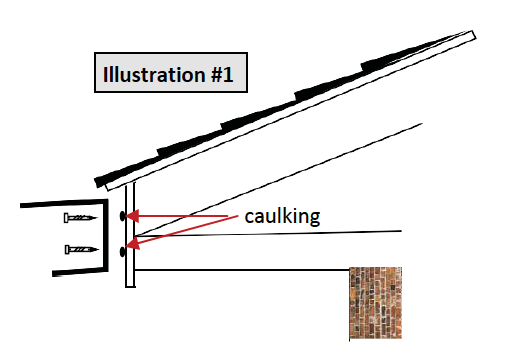 | 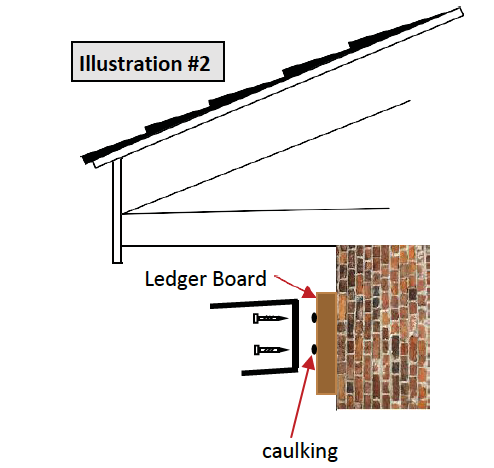 | 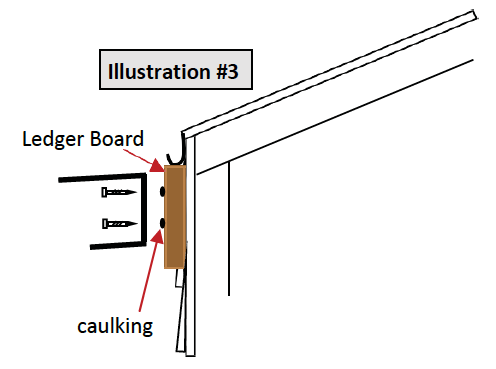 |
Prior to securing your C channel we suggest running two beads of caulking on the back surface where it will meet the building or fascia board. We suggest two screws (one above and one below the thermal break) every 12” to 16”. If you are installing on a fascia or wall without overhang protection (as in illustration #3 above), it is advised to flash over the channel and run a bead of caulk on the top of the C channel once installed so as to ensure a watertight seal.
Tip: Though it is not “imperative” it is advisable that the C channel be installed with enough room to be able to use the supplied 1/2” hex head Tek screws on both the top and bottom lips in order to firmly hold the roof panels in the C channel at the house wall. If you cannot put the screws through the top lip, be sure to at least use the screws on the bottom lip.
You will be responsible for the purchase of the hardware (screws/lag bolts) required to secure the rear header to your existing surface.
Step 2: Calculate Post Height
You will need to do the math to determine the finished size of your post and beam assembly. The following example is for a 12’ long, 3” thick panel supported at the 11’ mark by a 3” x 3” set back beam and 8’ posts. Your numbers should be adjusted accordingly.
Take the measurement from the deck / patio to the bottom flange of the installed C Channel. For the purpose of this illustration, call it 8 feet. With a pitch of 1/4” per foot of projection, the total height of the post & beam assembly will be 8’ minus 2 3/4” (11 x 1/4”) = 7’ 9 1/4”. The beam in this illustration is 3” tall which means the 8’ post supplied with the kit would need to be trimmed to a finished height of 7’6 1/4”.
NOTE: If a pitch greater than 1/4" per foot is needed, a hanging rail wall header would have been supplied (where available) with the order with adjustable pitch if this information was provided during the quote phase. If not, you can increase the pitch by installing a wedge between the c-channel and wall.
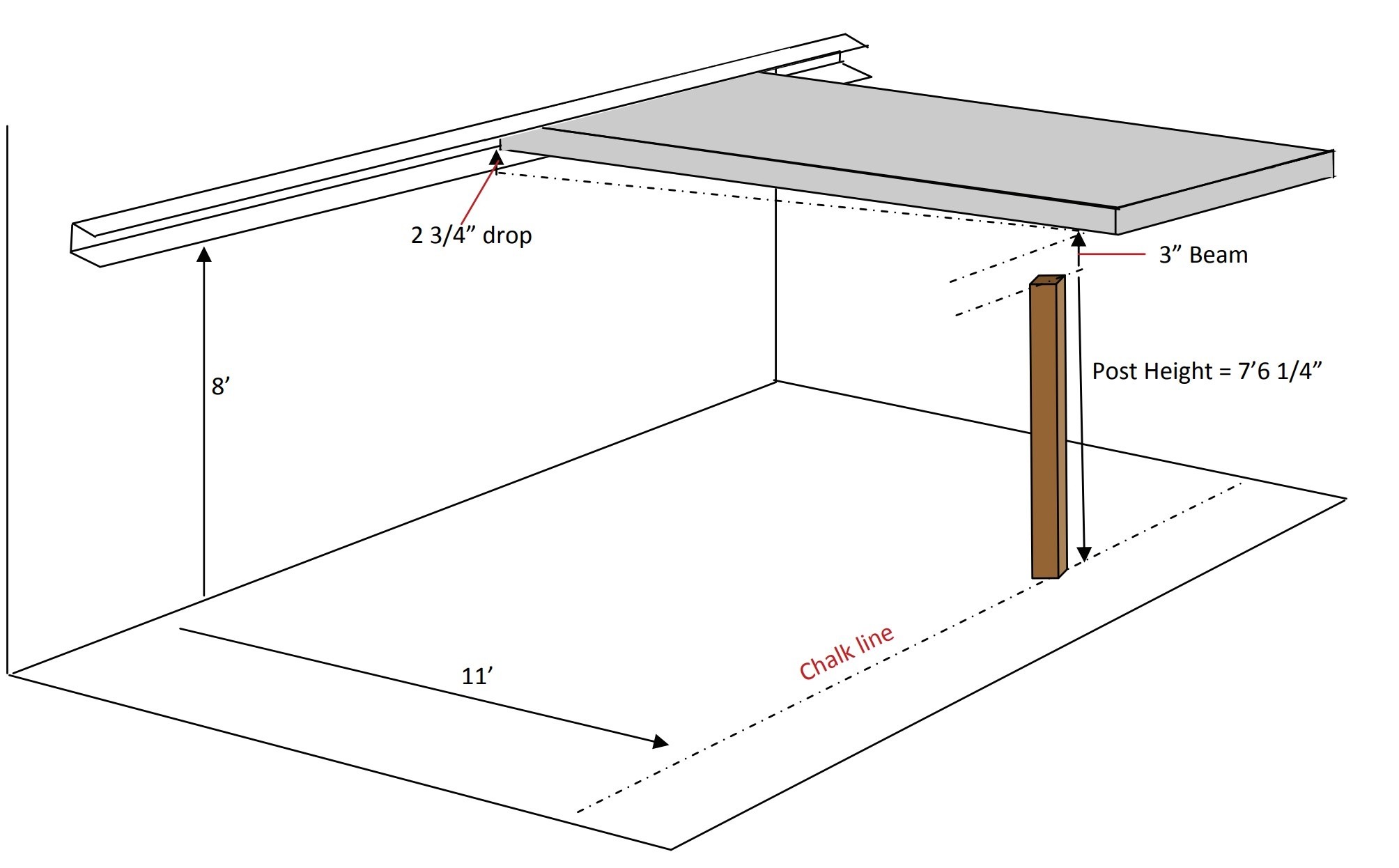
Step 2: Install Posts
Once you have determined the finished height of your posts you can get ready to install them. Posts should be square and plumb. Post spacing is determined based on the loading requirements provided during the quotation stage. The maximum span is indicated on your custom quoted room layout and will need to be referenced for this step.
TIP: You can square up the awning perimeter by snapping chalk lines off the ends of the rear C channel installation, down the wall and plumb to the deck or patio surface. Run another chalk line perpendicular from that line on the wall out along the surface of the decking or patio. Measure the exact distance of the ‘on center’ distance out to the setback beam location on each of those perpendicular lines and then snap a chalk line connecting those two points. You should be able to drop a plumb line from the underside of the roof panel at the ‘on center’ point of where the beam will be installed and it should touch the line you have snapped on the deck or patio (blue circle in the drawing in this section. Verify that the measurement from corner to corner on the deck surface is exactly the same. This should give you a square installation.
Step 2A: Surface Mount on Deck or Pad
To start, you will attach the bottom of the posts with the supplied brackets and hardware. Please note that that screws or anchors required to secure the brackets to your deck is not provided and will need to be purchased locally based on the construction of the surface you are mounting to.
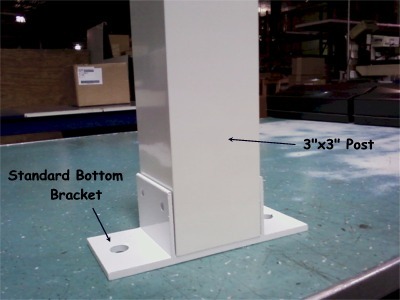 | 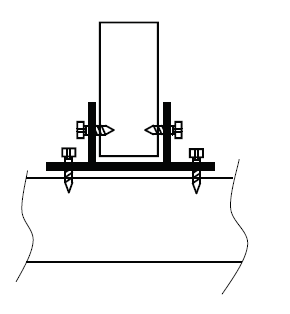 |
For those attaching to a wood deck, we suggest using nuts and bolts secured to the underside of your deck boards if accessible. Alternatively, you can secure through the deck boards with a large lag screw into the support structure below.
In the case of anchoring your posts to a cement surface we recommend they be at least 4” away from the edge of the slab or expansion joint. The bottom brackets have single holes on the bottom flanges. Line up the holes along your chalk line and follow these steps to anchor the bottom bracket.
| 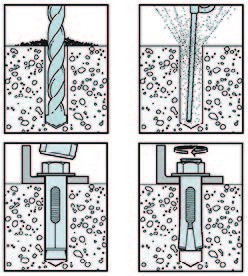 |
Step 2B: Anchoring your posts in the ground
If you are cementing your posts into the ground, we suggest you ask for posts long enough where at least 2’ of the total height of the post is in the ground. Slope concrete away from post for drainage.
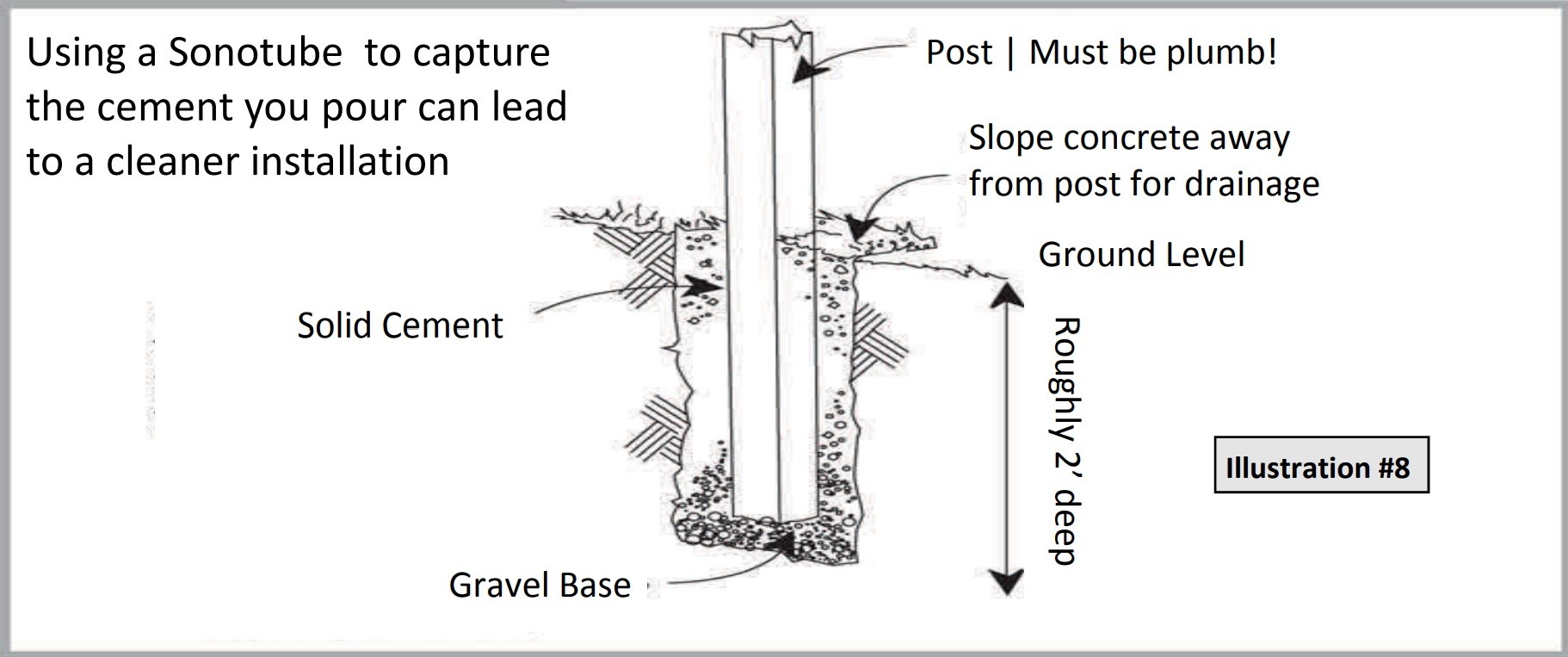
Step 3: Install Beam
Once the bottom brackets and posts are installed, cut your beam to size (if necessary). The beam size and type will have been indicated in your quotation. You will have been supplied with a beam and all the beam to post connection hardware.
We suggest cutting the beam 1‐1/2” short of each side of the total width of the roof panels. This will allow for easy installation of the side fascia and its bottom lip, which is a finishing step. You can go the full length, however you may need to cheat the flange between the top of the beam and the bottom of the roof.
The process to connect the beam to the posts varies based on the type of beam used for the application. Details for each are below.
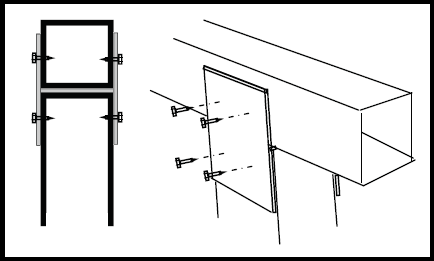 3" x 3" Beam to Post Connection 3" x 3" Beam to Post Connection | 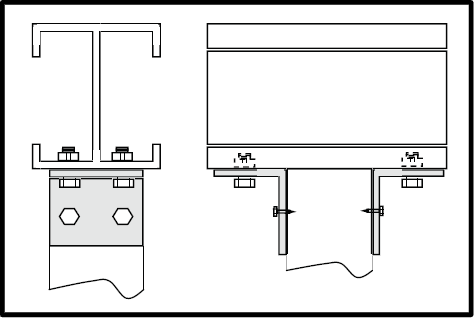 I-Beam to Post Connection I-Beam to Post Connection |
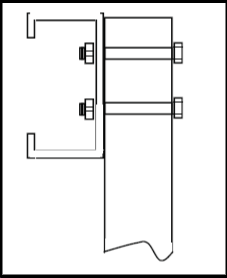 C-Beam To Post Connection C-Beam To Post Connection | 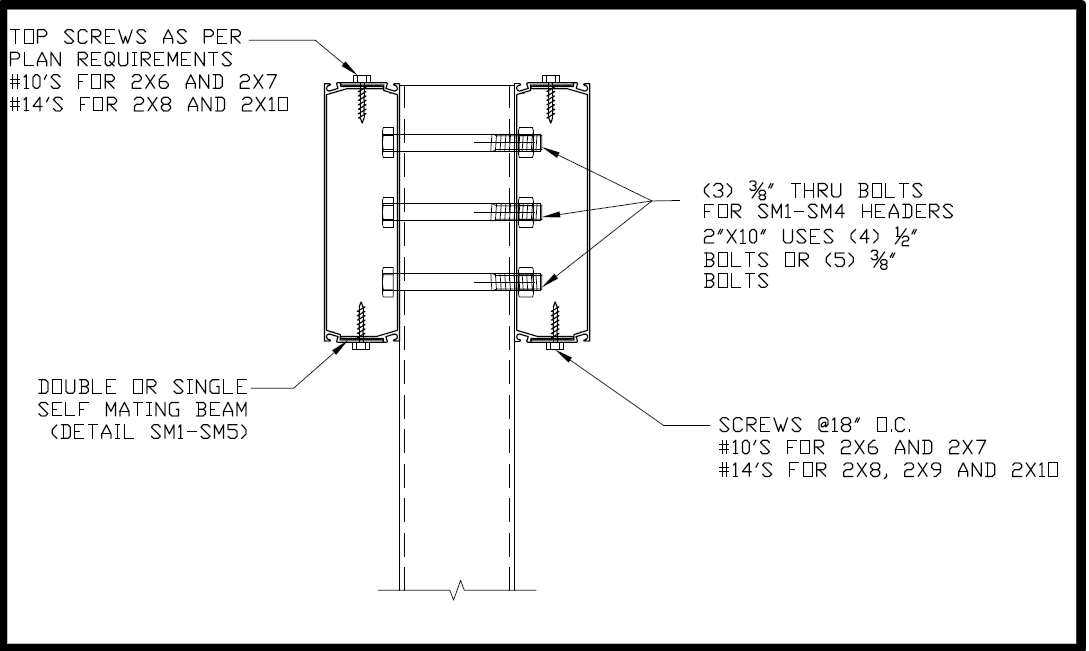 Self-Mating Beam to Post Connection |
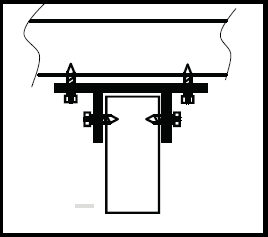 4" x 4" Beam to Post Connection (Standard) 4" x 4" Beam to Post Connection (Standard) | 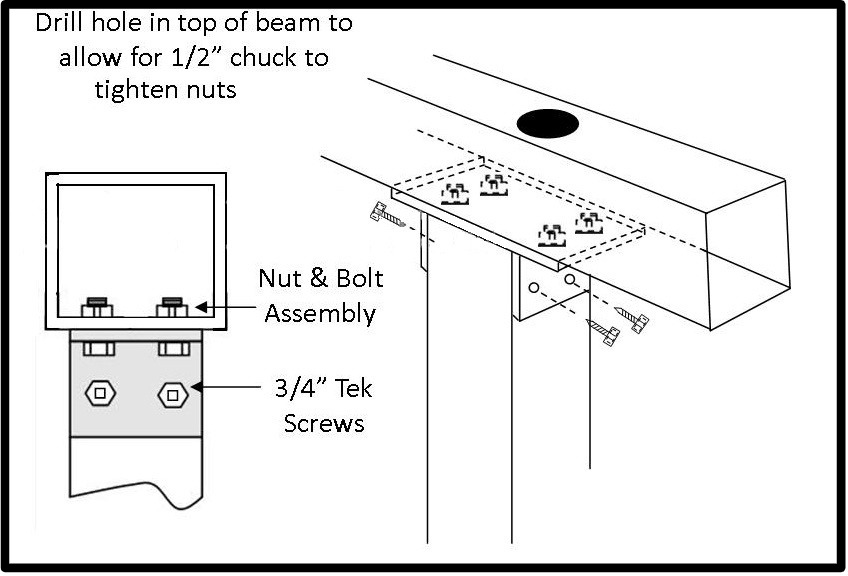 4" x 4" Beam to Post Connection (Alternate) 4" x 4" Beam to Post Connection (Alternate) |
Step 4: Insulated Panel Installation
With your front wall and rear header in place, it is time to start installing the insulated roof panels. We recommend you start on the Left Hand Side (LHS) "outside looking in” (OLI) toward the house wall and the instruction that follow are based on that orientation. However, if there are obstructions or you are attaching the roof to an L-shaped space with two walls attached, starting from the right side also works. If there are fan beam panels in your order, be sure the side with the fan beam is facing down into the room.
NOTE: In the case of an L-shaped or U-shaped installation, you may be provided with non-pitched header for the side wall(s), provided this information was given during the quotation stage. This header (or standard fascia, if not provided) should be mounted to the side walls prior to installing the first panel.
Step 4A: Determine The Best Panel Layout
Insulated panels come in both 4' wide and 2' (23" wide, technically) wide configurations. For covers with a width that is an even number, you should receive panels in the best combination to fill the exact width. For odd width dimensions, you will receive a cover that is wider than requested. If you have space you can install with extra overhang on the sides, otherwise you will need to rip the extra width off the last panel before installing it.
TIP ON CUTTING PANELS: The insulated panels can easily be cut to suit the installation as needed. This might be required to adjust the panel length or width or to workaround bump-outs of chimneys. This occurs frequently and there is no impact on the warranty of the panels. To do this, run a chalk line the full length or width of the panel and then cut each side of the aluminum skin with a chop saw or other cutting tool. The foam can be cut/cleaned up using a knife. Since the cut will be covered by the roof trim, it doesn't have to be a perfectly finished cut.
Generally, 4' wide panels are sent where possible; however, depending on the dimensions, you may receive a combination of both to fill the order. If panels are the same size and there are no fan beams, there is no special consideration. If one or more 2' wide panels are sent, you may want to consider the symmetry of the panels (and seams) into account. For example, and 18' wide cover would have (4) x 4' panels and (1) @ 2' wide panels. The optimal layout for most, would put the 2' wide panel in the middle and then two 4' wide panels on each side of it.
For covers that include one or more fan beam panels, additional planning is important. On panels purchased with this upgrade, a reinforced conduit runs the full length of the panel to supply power and mount a light or fan while concealing the wiring. These beams are located in the center of a panel and may take some additional work to be centered within the enclosure (or symmetrically placed in the case of multiple fan beams). For odd quantities of panels, its normally easier as the fan beam panel can be centered by nature of the design (ie. a cover with 5 panels can have the fan beam centered with 2 panels on either side).
For a cover with an even number of panels, you can either decide to have the fan beam off center or you will need to rip one of the non fan beam panels in half and then use the two halves as the first and last panels, respectively. For example, on a 16' wide cover, the only way to center the fan beam would be to take one of the 4' panels and rip it down the middle - one 2' piece becomes the first panel (with the cut edge into the fascia) and the 2nd half is the last panel, again with the cut edge into the fascia. For cover installations starting from the left, the half with the male lock should be used as the first panel.
Be sure to mark the location of the fan beam before capping the end with the fascia gutter so it is easily located when you get to installing the fan or light fixture.
NOTE ON PANEL LENGTH: At the discretion of the manufacturer, they may send one or more panels that are longer than the projection requested for the room. This is normally done to fulfill orders faster since the panels can quickly and easily be cut back on site using the tools listed above. Simply cut the aluminum on each side of the panel using the same cutting tool used for the extrusions and following the method noted above.
Step 4B: Install the First Panel
With the female lock on the left, lift your panel into place. We recommend putting a bead of caulking on the underside of the top lip of the backwall C channel prior to pushing the panel into place.
TIP: In order to avoid scratching the underside face of the roof panel use cardboard or a soft fluffy cloth on top of the beam or screen wall until you are ready to secure the panel in place.
Once the panel is in place, flush with the left edge of the backwall C channel, secure the panel to the C channel using the 3/4” hex head self tapping Tek screws on both top and bottom flanges, roughly every 8”.
Out front where the panel sits on the beam, you will be supplied with large self sealing hex head lag screws with neoprene back metal washers, 1” longer than the thickness of the roof you are installing. We suggest installing (1) lag screw on the Right Hand Side (RHS) of the panel 5” in from the seam. DO NOT TIGHTEN ALL THE WAY DOWN SO THAT THE NEXT PANEL HAS ROOM TO SNAP ONTO THIS PANEL. This will hold the panel in place while you assemble the remainder of the roof.
TIP: As you install the rest of the roof tighten the lag screw/bolts so as to create a slight dimple in the top of the roof metal. It does not need to be tightened any more than that! We also recommend a large bead of caulking on top of each lag screw so as to prevent a water build up in the “dimple.”
Step 4C: Install Remaining Panels
With the first panel in place, put a bead of caulk on the underside of the top lip of the C channel, put your cloth or cardboard on the beam or front screen wall and put a bead of caulking (supplied) in the top channel of the male lock making sure it is a consistent thickness and with no air pockets. Then take your second panel, position it just outside the C channel, raise it up and gently but firmly, snap it down. Pushing from the front of the cover to toward the house, slide it into place in the C channel. Be sure to do this before the caulking begins to set! Wipe off any excess caulking on the seam. You may secure the panel to the C channel using the 1/2” hex head self tapping Tek screws on both top and bottom flanges, roughly every 8”.
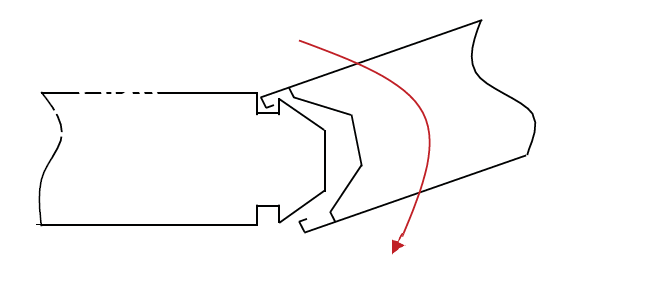 |  | 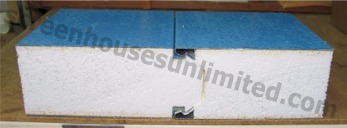 |
TIP: If you have panels with a fan beam included, you are best served to run the wiring through the rear header and into the panel beam prior to securing the panel into the header.
Step 4D: Trim and Install Last Panel
Your last panel will have a male lock protruding past the edge of the roof line. Prior to putting into place, carefully trim off the male lock back to the seam edge. The seam edge should line up with the right hand edge (OLI) of the C channel installed on the house wall. This will also allow you to attach the extruded side fascia, capping the edge of the insulated panel.
Step 4E: Secure Panels to Uchannel
To install the remaining lag screws, snap a chalk line on top of the roof that is centered over your screen wall. Be sure that it runs over top of the center of the first lag screw you installed in the first panel. Using the chalk line as a guide, install the remain lag screws/ bolts. We suggest putting a bead of caulking down around the lag screw/bolt prior to finally tightening it down on the roof.
You will use (3) three lag screws/bolts on every 4’ wide panel and (2) on every 2’ wide panel. Always be sure the outside lag bolts/screws are at least 5” in from the seam edges.
Step 5: Finishing Your Roof Installation
Before going any further, take your side fascia extrusion and bring it up to the end of your front gutter extrusion to understand how they are going to fit together on your roof. As noted previously, the side fascia will cap both the back wall C channel as well as each end of your front gutter.
NOTE: For 6" panels, drip edge fascia is provided for all three sides, so there is no gutter to cap at the front. Instead, the sides butt against the front and then the joint is caulked.
Step 5A: Cut and Install Front Gutter
| Cut your front gutter extrusion to the exact width of your finished roof. Put a bead of caulking on the underside of the top lip before you slide it in place on the front of your roof panels. Use the 3/4” self tapping Tek screws to attach the top and bottom flanges to your roof panels. Wipe off any excess caulking. |  |
NOTE ON GUTTER SPLICE: The gutter comes standard in 24' lengths. Any covers with a width that exceeds 24' will be sent multiple gutter extrusions to cover the full cover. There is no splice kit for this gutter type and you only need to cut square and butt splice the ends and then apply a generous bead of caulk or gutter seal to the inside and outside of the joint. In areas where the cover must ship via common LTL carrier, the gutter may be cut down for safe shipping and may require a similar butt spline on install.
TIP: When installing the gutter over the panels, be sure the panels sit square inside the channel. If not installed properly, the gutter will install at an angle and will not be capped properly by the side fascia.
Step 5B: Cut and Install Side Fascia
Next cut the exact length of side fascia you need to run from the house wall to the front gutter, capping the end of the gutter itself. The double catch fascia is installed with the lip oriented on the bottom so it caps the gutter which drops below the panel line. In order to accomplish this, the lower leg that mounts to the panels will need to be notched where it meets the gutter as shown in the photo to the side. Again put a bead of caulking on the underside of the top lip before you slide it in place on the side of your roof panels. Use the 1/4” self tapping Tek screws to attach the top and bottom flanges to your roof panels. | 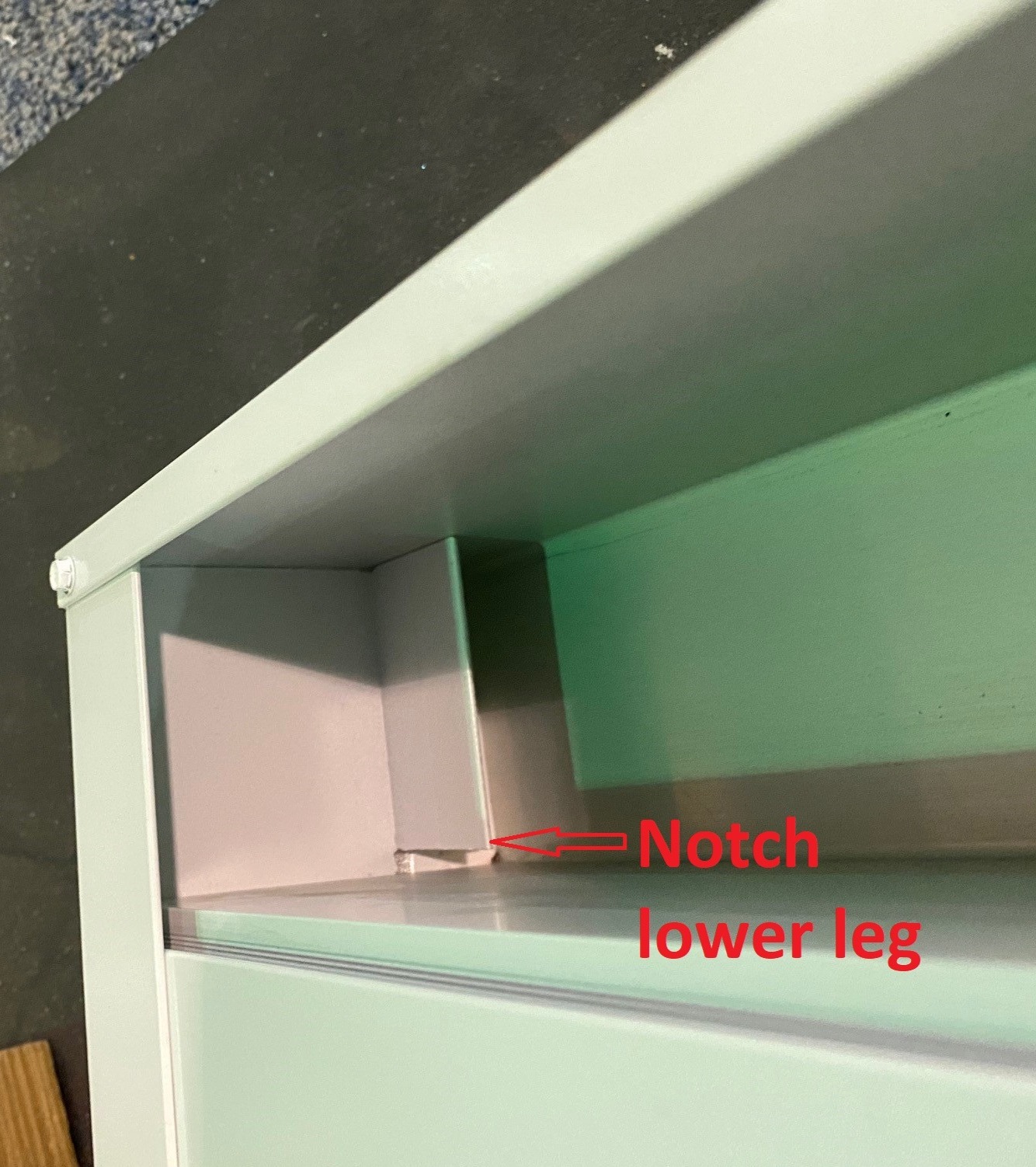 |
Wipe off any excess caulking. The top leg of the fascia is installed under the front lip of the gutter and then secured with a 3/4" tek screw and then the joint caulked to prevent leaking.
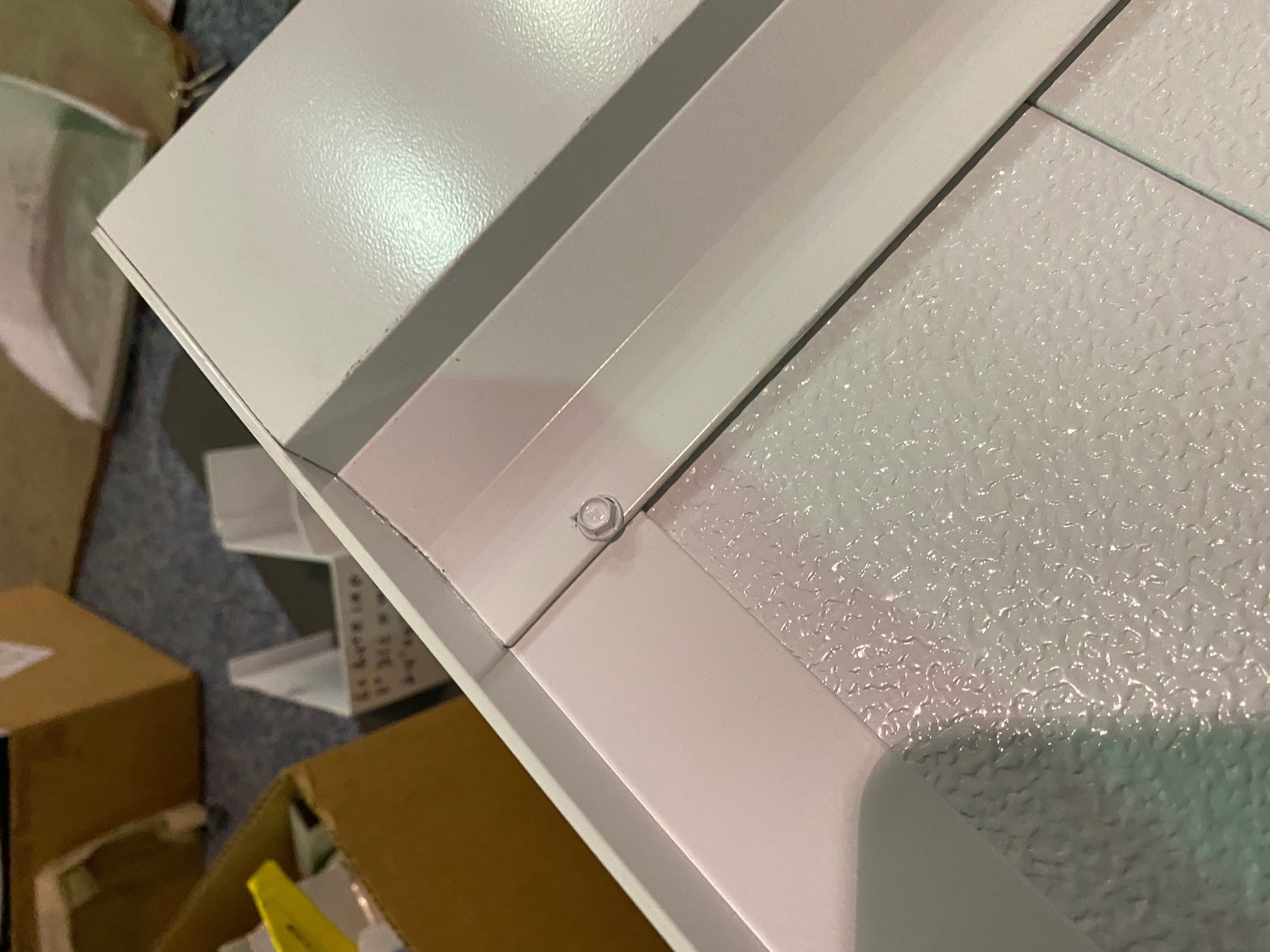 Underside of Gutter and Fascia | 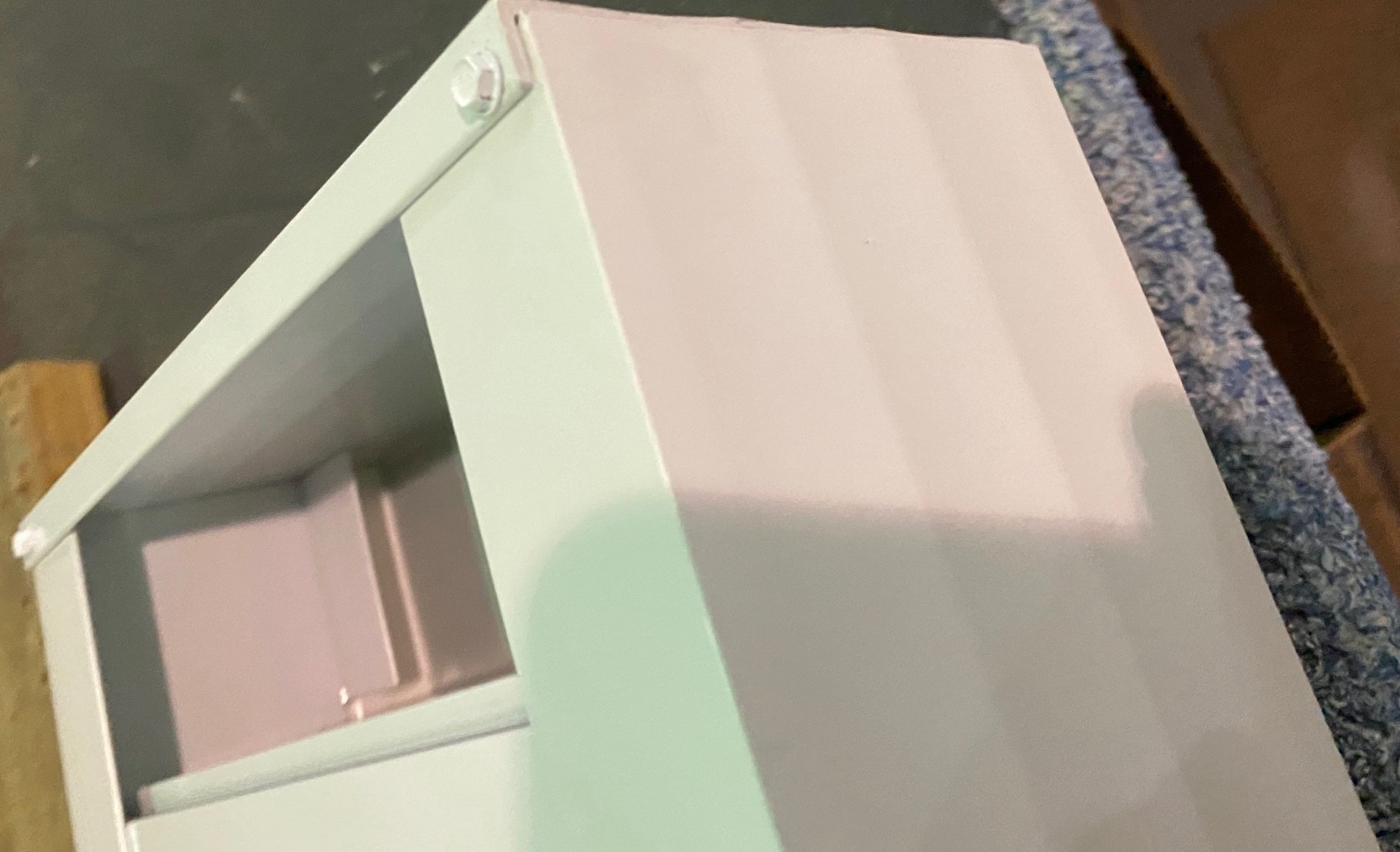 Double Catch Gutter Top Overlap Detail Double Catch Gutter Top Overlap Detail |
Step 5C: Seal Roof Joints
| White Peel and Seal tar tape is supplied with all orders to finish off each of the seams on the top of your unit. Because the caulking you have applied thus far is likely still setting to some degree, we strongly suggest, before you get up on your roof, that you temporarily support your roof from underneath, at the half way mark of the projection, with padded 2x4 bracing. This will minimize the flexing at the seams as you apply the tar tape. Apply the tape to every seam on the top of your roof. This will include the seams between panels as well as all the seams where the backwall C channel, side fascia and front gutter sit on the roof top. | 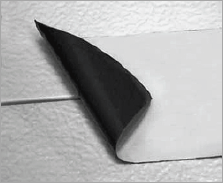 |
The sun will activate the tar like substance on the back side of the white tape sealing it to the surface and sealing the seam against the weather. The tape remains flexible, moving with the panels and extrusions as they naturally expand and contract.
If not performed in the previous step, put a large bead of caulking on top of each lag screw so as to prevent a water build up in the dimple.
Step 5D: Install Scuppers or Downspouts
| Drain scuppers are provided with each order (see picture off to the side) to drain your front gutter. Many customers prefer to purchase and install a standard residential downspout locally and these can be discarded in such cases. If you choose to purchase downspouts locally, please follow their directions for downspout installation. Lastly, due to the design of the panel and the patented snap lock design, it is almost impossible for the panel to leak at the seams. | 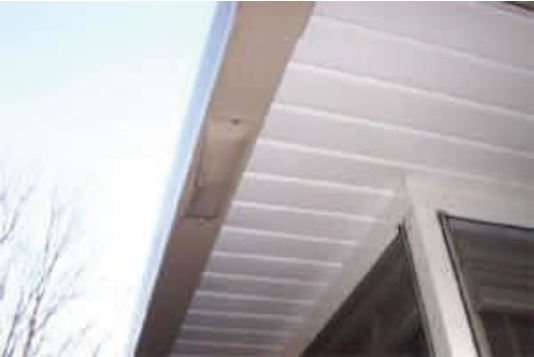 |
In any patio cover installation, the most critical leak point is where the unit meets the existing structure. We would strongly suggest you use your local supplier to talk about which type of flashing best suits your application. Naturally, if your installation is under an existing soffit, it is already more protected and may not need any additional protective measures.
Congratulations! ENJOY your new Insulated Patio Cover! If you found any errors or missing details in this guide, please do let us know so we can improve it for future purchasers.